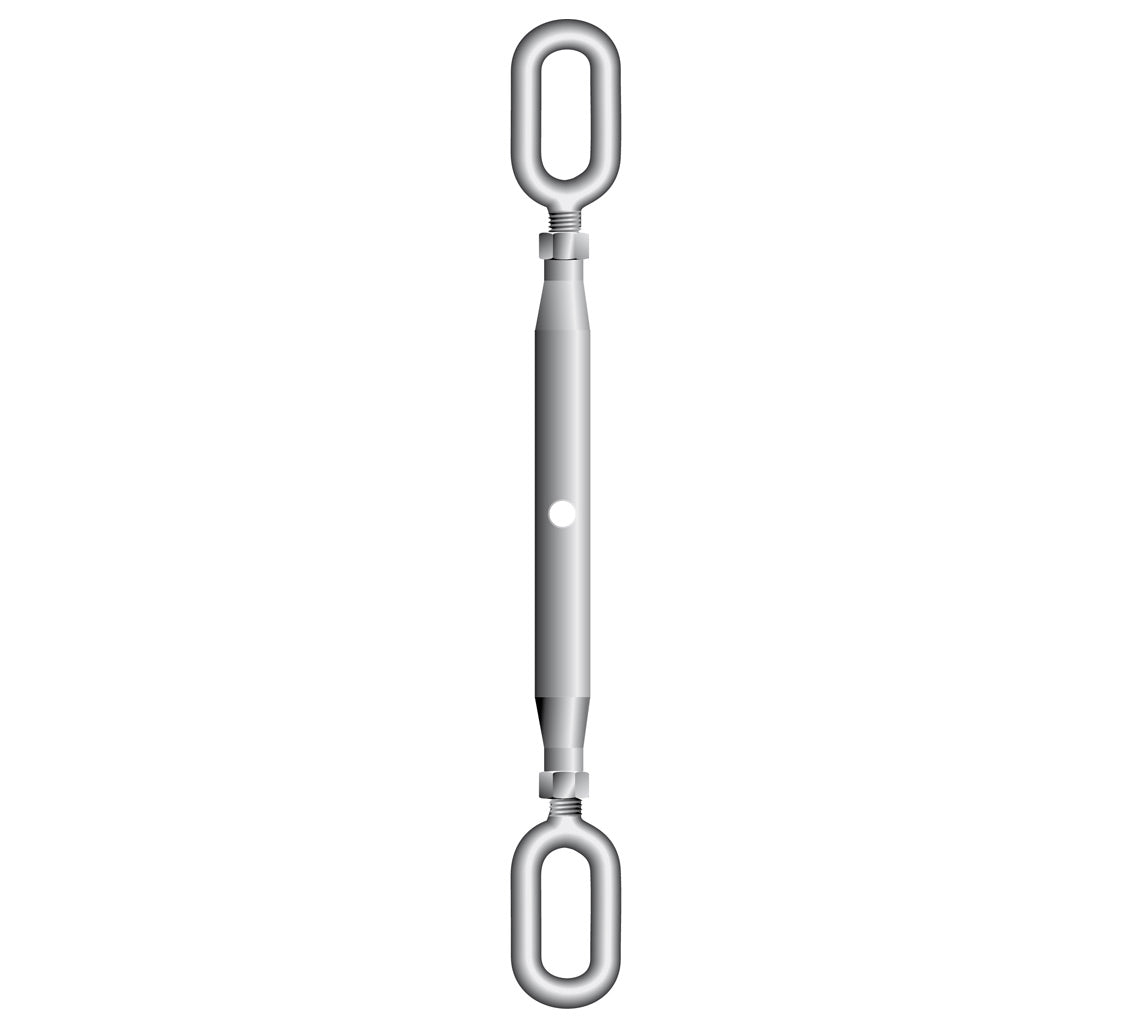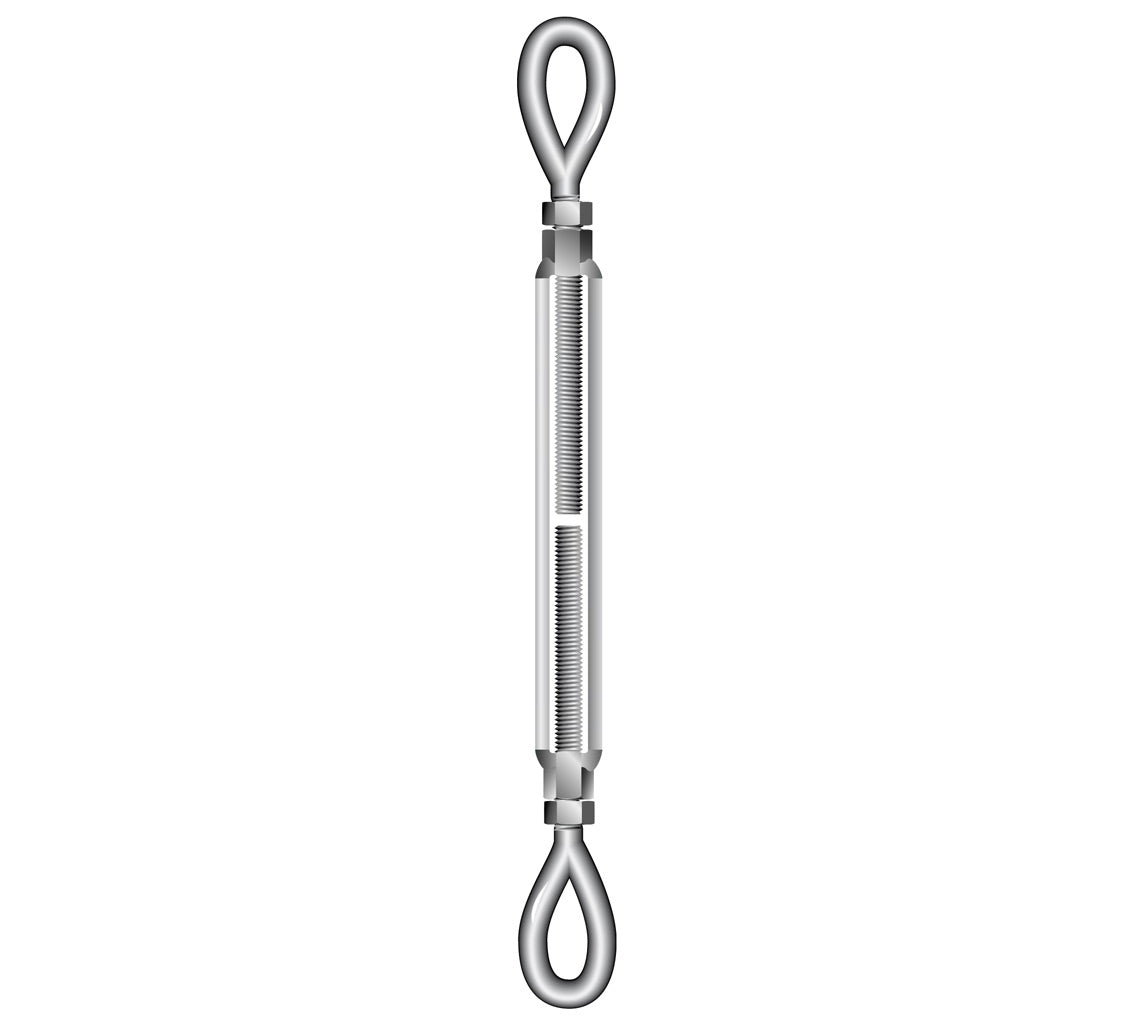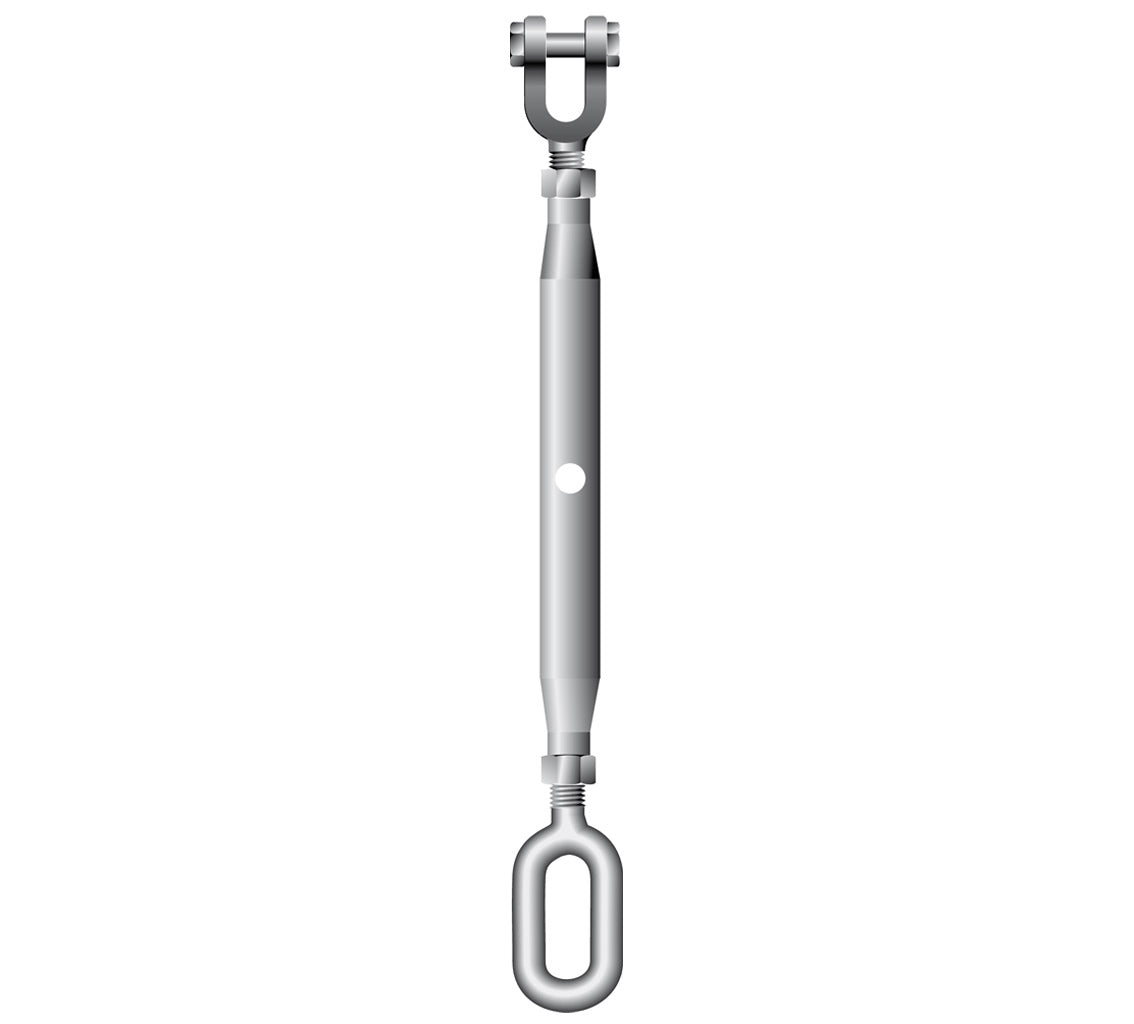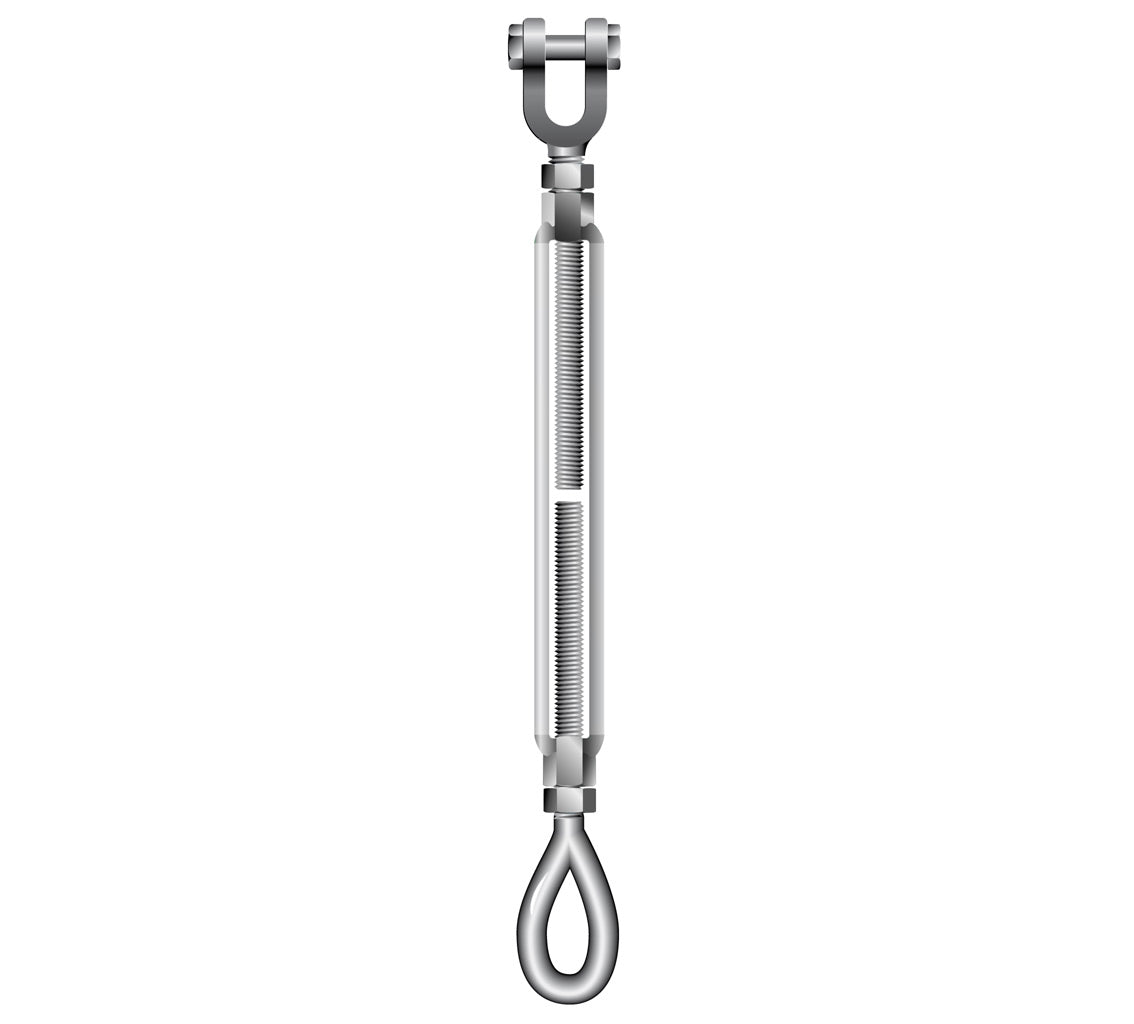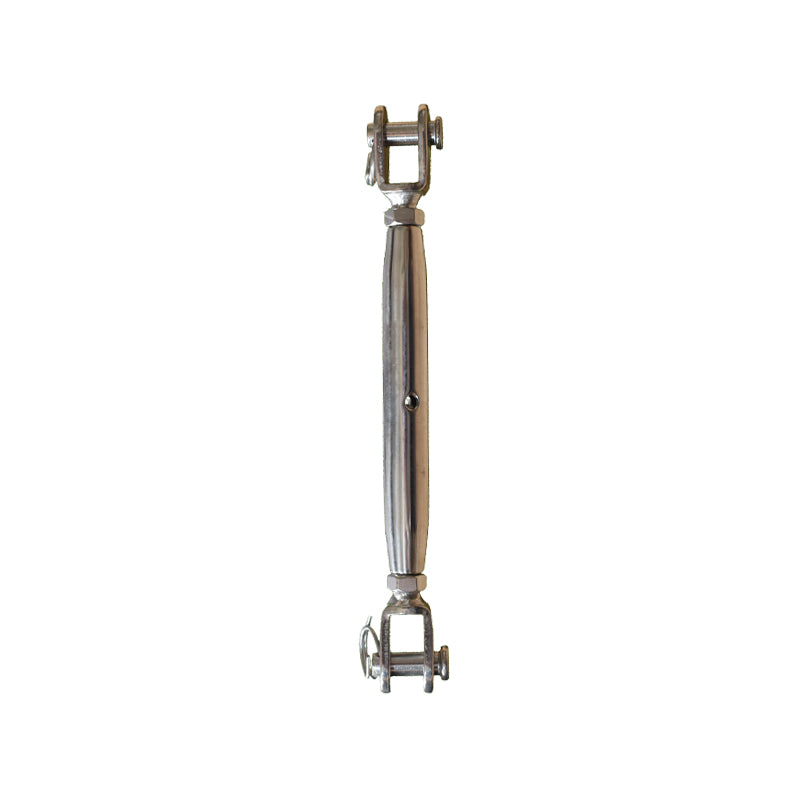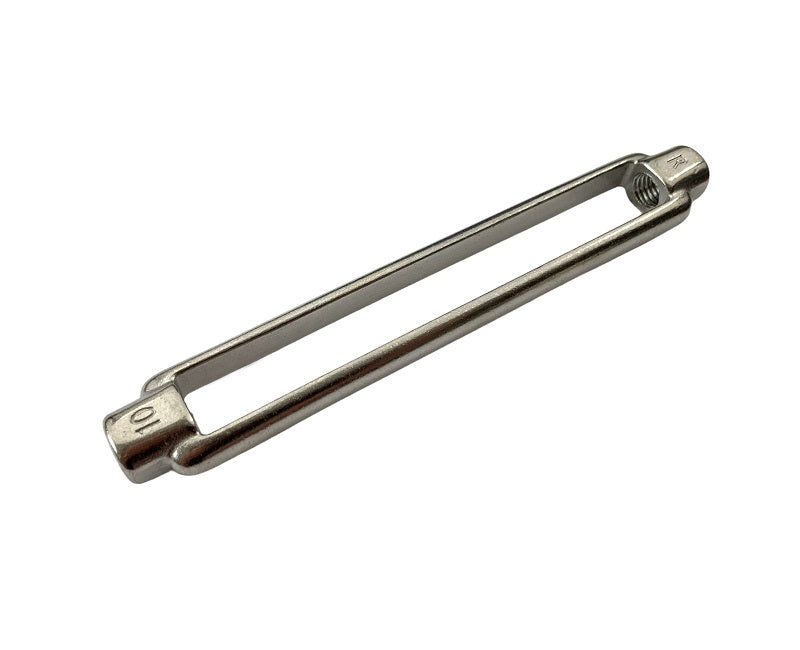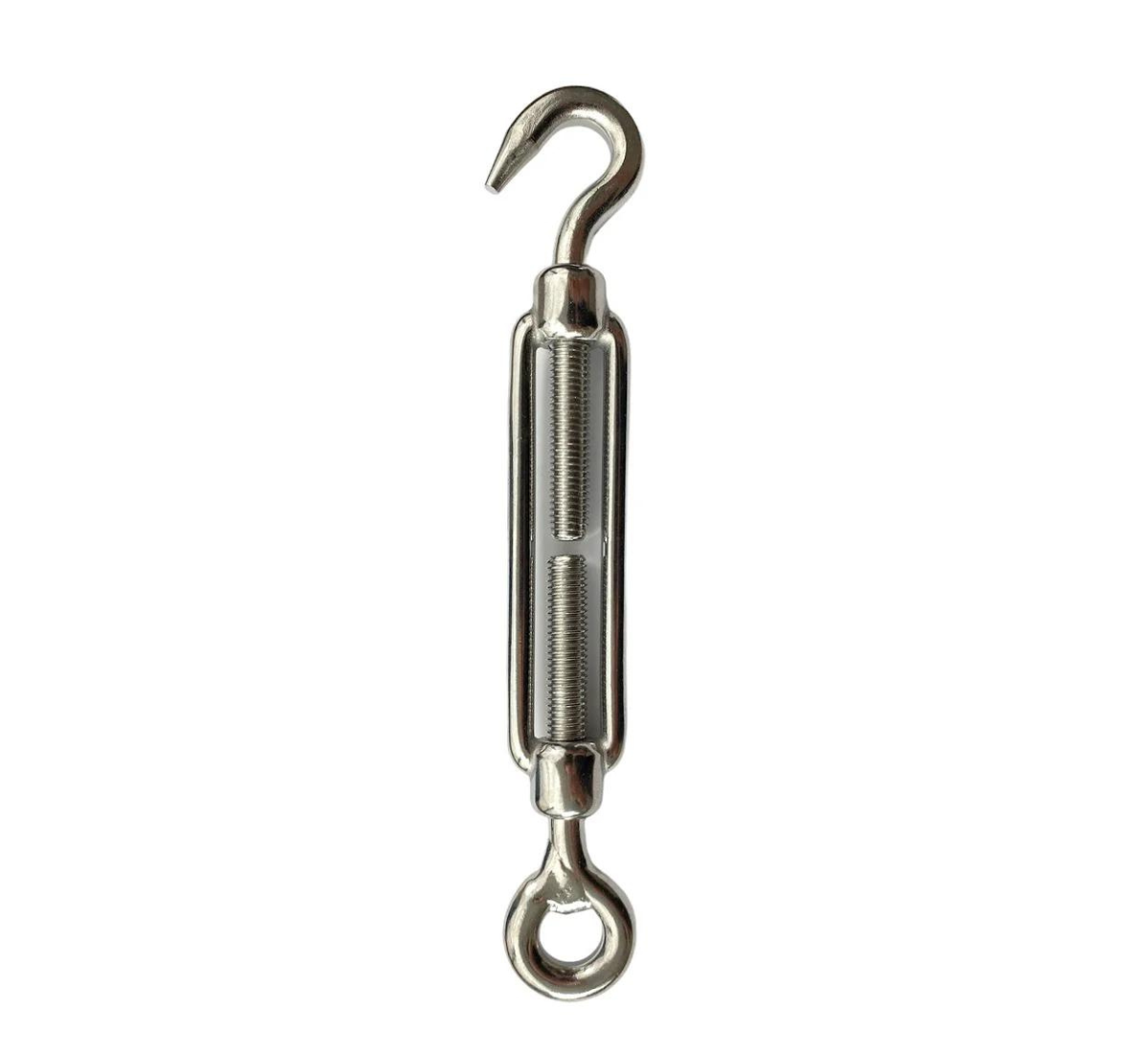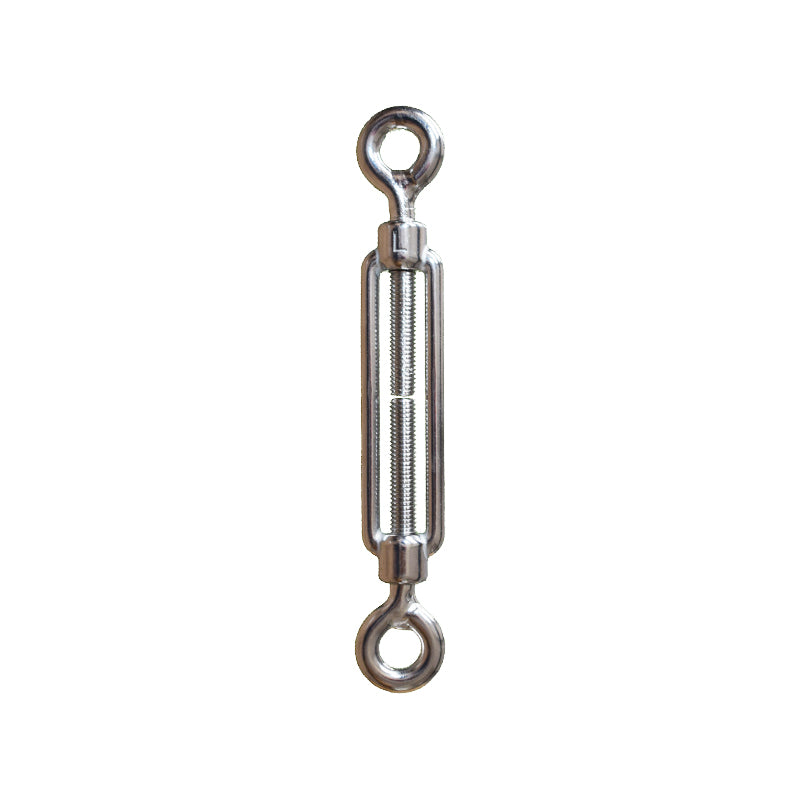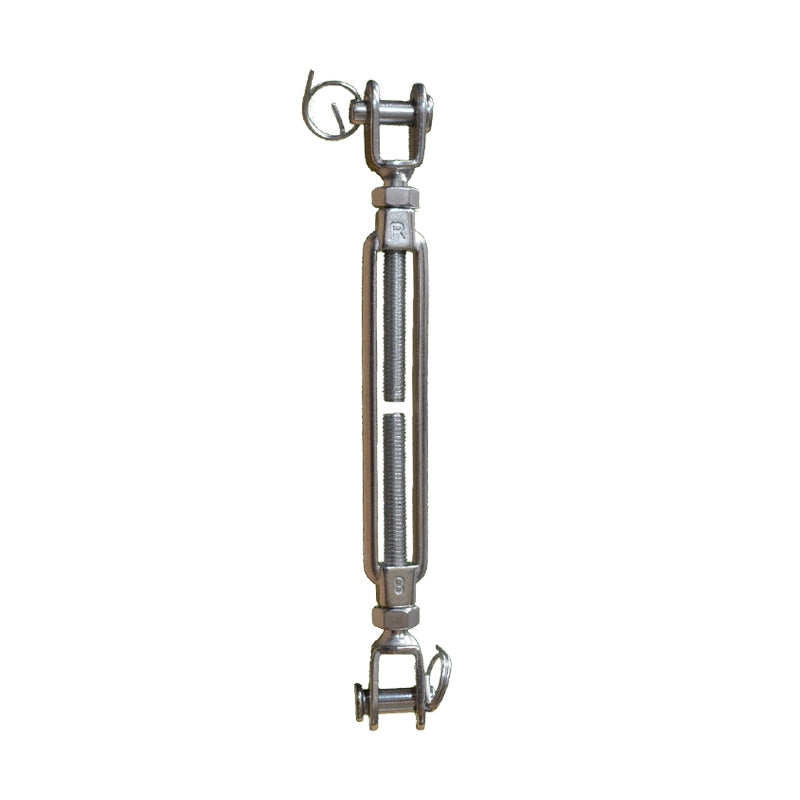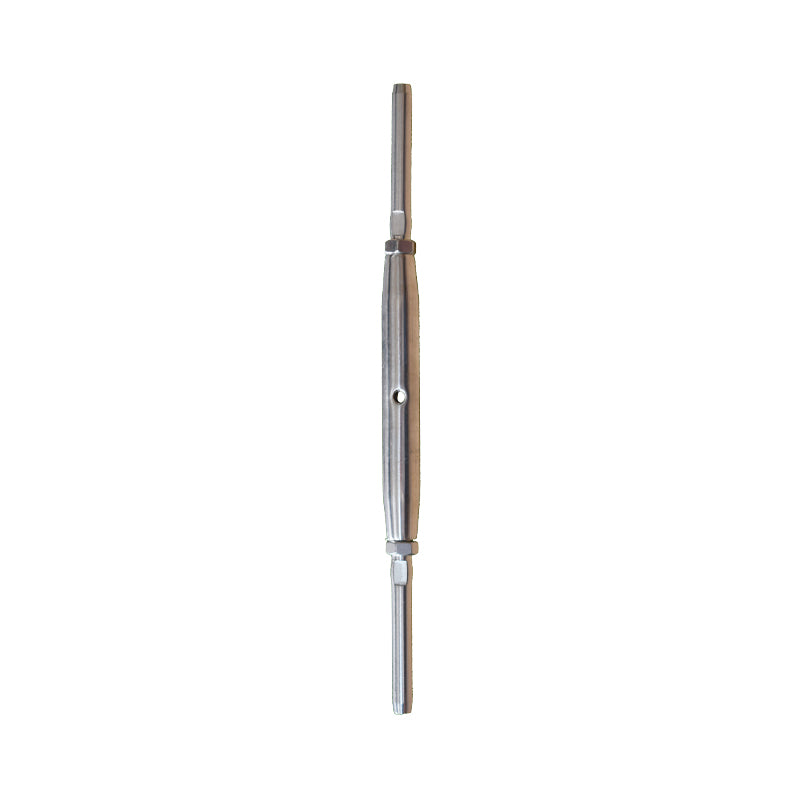Turnbuckles & Rigging Screws
Browse our high-quality range of turnbuckles and rigging screws, each designed for adjusting tension and length in ropes, cables, and chains, delivering optimal precision load control during lifting, construction, and marine applications. At LES - Lifting Equipment Store, we pride ourselves on quality and performance, that's why our selection of turnbuckles and rigging screws are from the most trusted brands in the market.
When you need a reliable way to tension wire, rope, or cable, turnbuckles and rigging screws are the go-to choice for both professional and DIY applications. From marine rigging to construction projects, these adjustable fittings deliver the strength and precision needed to keep structures safe and secure.
What is a Turnbuckle?
A turnbuckle, sometimes called a turnbuckle wire tensioner, is a simple but powerful device used to adjust tension in cables, ropes, and structural wires.
Traditionally developed in the aircraft industry to stabilise wings, turnbuckles are now widely used in industries ranging from shipping and construction to landscaping and architecture.
Types of turnbuckles available:
- Stainless steel turnbuckles – corrosion-resistant and ideal for outdoor, marine, and architectural use.
- Galvanised turnbuckles – zinc-coated for durability, commonly used in construction and heavy-duty environments.
What is a Rigging Screw?
A rigging screw works on the same principle as a turnbuckle but has a closed body design, protecting the internal threads and creating a smooth, modern finish. This makes them especially popular in marine and architectural projects where appearance and weather resistance are key.
Rigging screws are measured metrically in millimetres, while turnbuckles are traditionally measured imperially in inches.
Turnbuckles vs Rigging Screws – Key Differences
While rigging screws and turnbuckles are often used interchangeably, there are some distinctions:
- Turnbuckles – Open body design, US standards, imperial sizing.
- Rigging Screws – Closed body design, European standards, metric sizing.
Both are tension turnbuckles designed to eliminate slack and maintain cable strength.
Common Uses for Turnbuckles and Rigging Screws
Turnbuckles and rigging screws are versatile fittings, used across industries such as:
- Marine & Sailing: Securing masts, guardrails, and rigging lines.
- Construction: Tensioning support cables, scaffolding, and structural frameworks.
- Architecture: Creating stylish cable balustrades and railing systems.
- Landscaping: Supporting shade sails, trellises, and garden structures.
- General use: Any application where cables or ropes must be safely tensioned.
Choosing the Right Turnbuckle or Rigging Screw
When selecting the correct turnbuckle wire tensioner or rigging screw, consider:
- Material: Use stainless steel turnbuckles for corrosion resistance in marine and outdoor environments. Choose galvanised rigging screws for cost-effective strength in construction.
- End Fittings: Eye/eye, hook/eye, and jaw/eye combinations suit different jobs.
- Load Rating: Always match the working load to your project requirements.
- Size: Ensure the tension turnbuckle matches the diameter of your wire or rope.
Why Buy Turnbuckles and Rigging Screws from Us?
We stock a full range of stainless steel turnbuckles, galvanised rigging screws, and tension turnbuckles to meet every application. Whether you’re a contractor, sailor, or DIY enthusiast, you’ll find reliable, high-quality fittings designed for ease of use and durability.
Our products are:
- Made from high-grade stainless or galvanised steel for long-lasting performance.
- Precision engineered for smooth adjustment and secure holding.
- Available in a wide selection of sizes and end fittings.
Order Your Turnbuckles and Rigging Screws Today
Don’t compromise on strength or safety. The right turnbuckle or rigging screw makes installation faster, adjustments easier, and results stronger.
👉 Browse our full selection today and order your turnbuckles and rigging screws with confidence.
Turnbuckle & Rigging Screw FAQs
The end fittings determine how the turnbuckle connects to other hardware:
- Jaw: Has a clevis with a pin, used for attaching to eyes or loops.
- Hook: Allows quick connection/disconnection but is less secure.
- Eye: Provides a permanent connection to shackles, bolts, or ropes.
The correct size depends on the working load limit (WLL) of your application. Always match or exceed the strength of the wire rope, chain, or rod you’re tensioning. Manufacturers provide safe working load ratings for each size - never exceed these limits.
First, ensure the load is stable and secure. Use the central body to rotate and evenly tighten both threaded ends. Always leave a minimum number of threads engaged inside the body for safety. For heavy loads, use wrenches rather than bare hands.
They are widely used in construction (bracing steel structures), shipping and marine industries (securing loads, stays, and masts), entertainment rigging (stage equipment and lighting), and architecture (tensioning cables in balustrades and facades).


